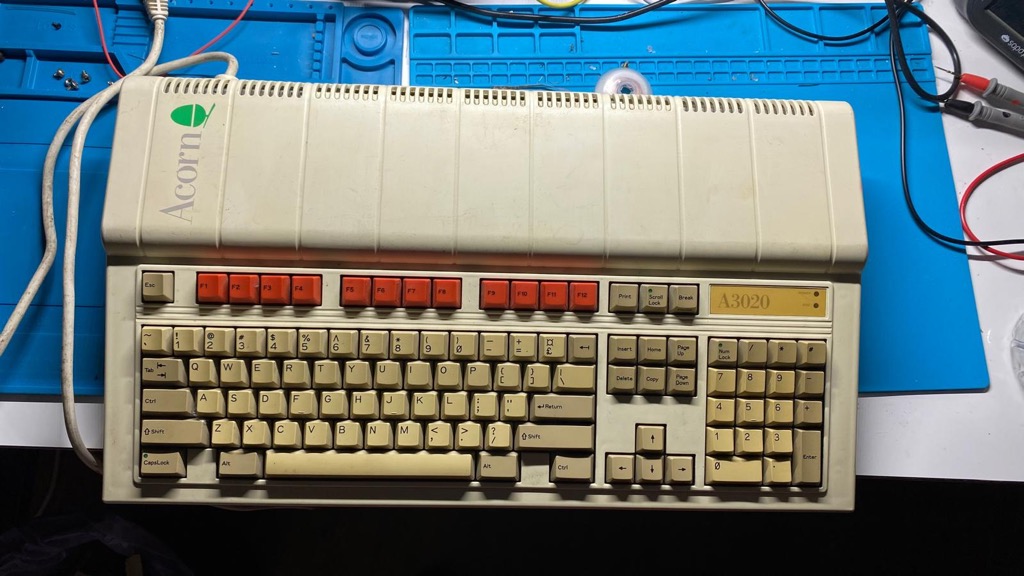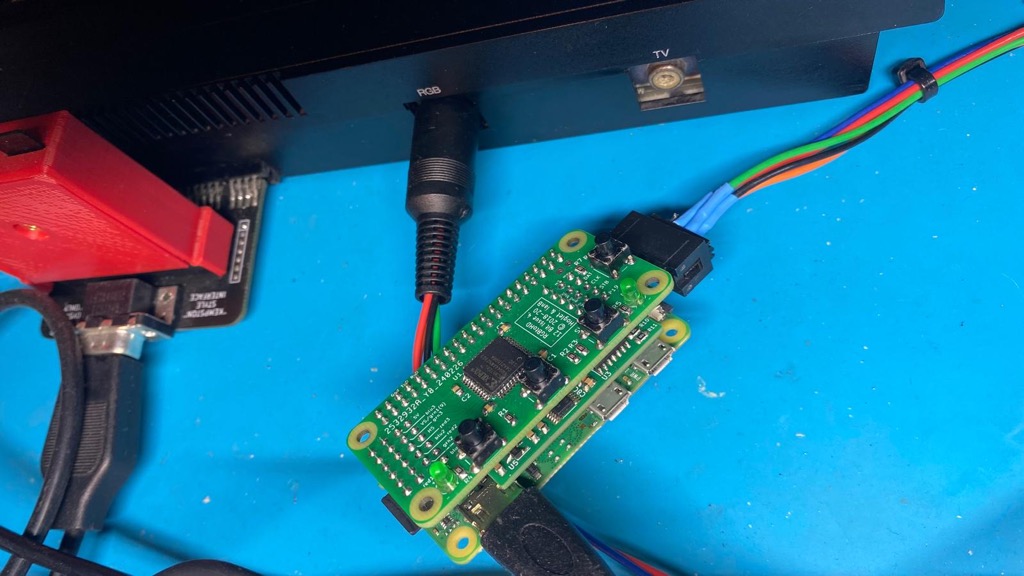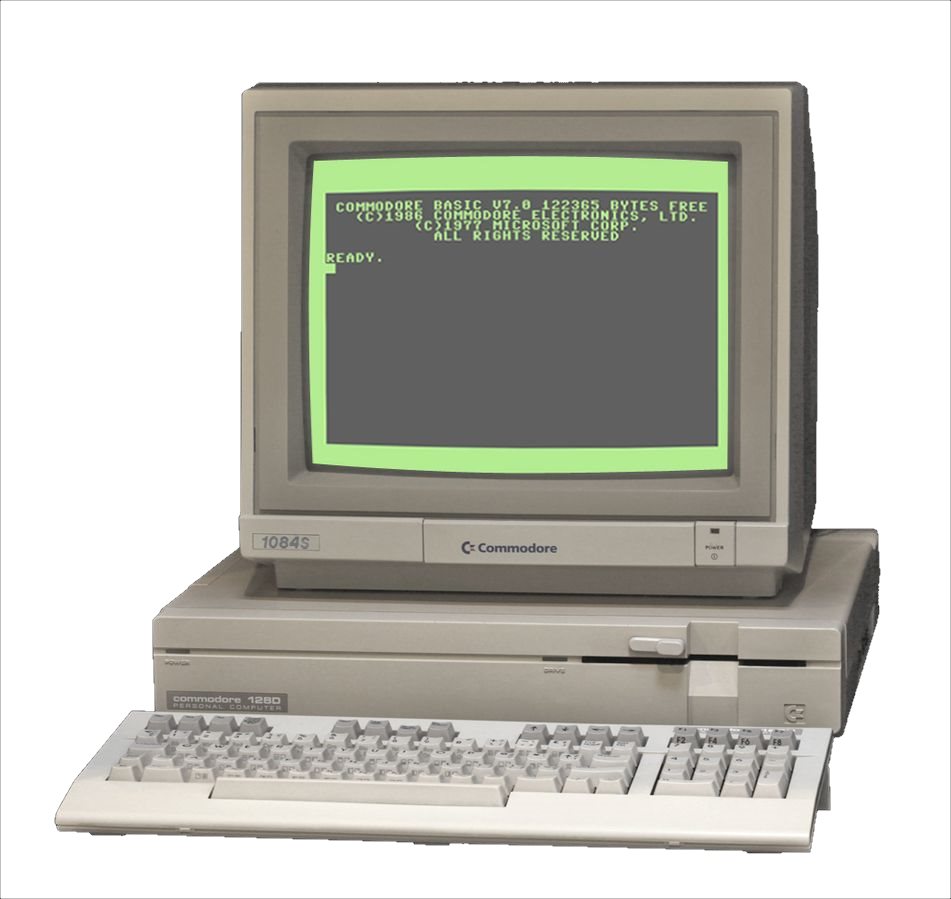👶 From when Mosaic took over Gopher.
🏢 VP of Engineering @ Cloudflare
🕹️ Slightly addicted to retrocomputing
Poor man's soldering fumes extractor
My electronics lab is inside my office at home. It’s very convenient for the occasional hacking electronics project. Still, I do a lot of soldering, and breathing those solder fumes in a closed space isn’t very healthy, especially during winter when the windows are all closed.
Home labs are so prevalent now that brands are paying attention; fume extractors are no longer expensive. But what’s the fun in buying when I can build my own?
…Computers that I never had: the Acorn A3020
The computers that I write about on this blog are mostly machines that I owned when I was younger. That changes today. Over the last few months, I’ve been slowly taking free time to work on a machine that I never owned (or could have; they weren’t sold outside the UK), an Acorn Archimedes A3020.
 My Acorn Archimedes A3020
My Acorn Archimedes A3020
What’s special about this computer to me is its historical relevance. It runs on one of the first ARM RISC processors. More specifically, it runs an ARM 250, a system-on-chip that includes the 32-bit ARM3 core, along with memory and I/O controllers.
…Assembling a Retro Chip Tester Pro
I’ve been considering adding a chip tester to my lab for some time now, but I’ve never quite taken the plunge. BackBit, whom I know well because I have a BackBit Pro cartridge that I use to load software onto my 8-bit computers, has the Chip Tester Pro V2. I was close to buying one, but I found it somewhat expensive, and importing it from the US didn’t help, so I waited.
…ZX Spectrum+ Toastrack Part 2
This is a quick update from my Restoring a ZX Spectrum+ Toastrack blog.
RGB is not analog, we need more colors
First, I found that the 6-way IDC analog RGB extender that I used with the RGB2HDMI adapter wasn’t detecting all the colors. Specifically I wasn’t seeing the half bright variant of the 3-bit 8 color palette.
 6-way IDC analog RGB extender
6-way IDC analog RGB extender
As you can see I only have 8 colors.
…Restoring a ZX Spectrum+ Toastrack
I talk a lot about Commodore machines in this blog; they left a bigger dent in me growing up, but like most kids of my generation living in Portugal in the 80s, the first computers I played with were actually Sinclairs—first my friend’s ZX81 and then a ZX Spectrum 48K that my parents offered me. I have many memories of playing games like the Horace series, Manic Miner, Jetpac, or Chuckie Egg on my Spectrum.
…Changing the A1000 fan
I’m on a roll upgrading the Amiga 1000. This time, I replaced the PSU fan.
The Amiga 1000 PSU uses an ETRI Model 126LH metallic fan that is AC-powered 220/110V. These fans are pretty good, silent, reliable, and used in computers and industrial-grade equipment. However, they all suffer from a common problem: after long years of continuous use, the fan bearing starts developing an annoying grinding noise due to a lack of lubrication. This is a well-known issue for Amiga 1000 users, and I mentioned that mine also had the same problem in another post.
…RGB2HDMI for the Amiga 1000
On my last post “the first perfect computer” I mentioned that I wasn’t done with the A1000. I finally upgraded it with an internal RGB2HDMI adapter.
For those unfamiliar with RGB2HDMI, it’s a brilliant and affordable open-source project that converts “digital” RGB video signals from vintage computers into crystal clear HDMI video with very low latency. At its core, there’s a combination of a RaspberryPi Zero running bare-metal code and a CPLD (complex programmable logic device) programmed to do level shifting and pixel sampling on the TTL RGB outputs from a vintage computer and feed the processed data into the Pi’s GPIO pins.
…The first perfect computer
This is a story about restoring and upgrading a Commodore Amiga 1000, the first model of the Amiga series.
Many of you might be familiar with the popular Amiga 500 or later models, but the Commodore Amiga 1000 was actually the first model of the Amiga series produced.
I consider the A1000 a significant piece of home computing history. Arguably one of the most important machines of the 16-bit revolution period, considered by many to be the first multimedia computer, it marked the beginning of Commodore’s last cycle, after the huge success of the C64, in the history of personal computing.
…Running CP/M on the C128
The CP/M, short for Control Program/Monitor, was one of the first operating systems of the personal computer revolution. It was launched in 1974, and it celebrates 50 years this year. It was ported and made available for many 8-bit machines with different CPUs and was related to running productivity software. If you ever used CP/M, then, well, I hate to say it, but you’re old.
I had a brief encounter with CP/M when I was 14 or 15 years old; I can’t remember exactly. At the time, I was in high school in Aveiro, and the local computer shop, which I visited daily on my way to the train station, just to stare at the window, the same way a pilgrim would visit and contemplate at a shrine, had two beautiful machines on display: the brand-new Amiga 1000 and a C128D.
…My finest C64/128 setup so far
The C128 is a fascinating and unusual machine. It was the last 8-bit Commodore machine before the Amiga and co-existed with the C64 series for a while. They sold ~8 million units worldwide (vs ~17 million C64). I never owned one, but I fondly remember playing with one at my friend’s place and seeing them in computer shops.

It’s fully 99.8% backward compatible with its predecessor in C64 mode, but in native C128 mode it takes advantage of its 128 KB RAM, higher clocked 2 MHz 6510 variant (the 8502), and the improved VIC-IIe graphics chip.